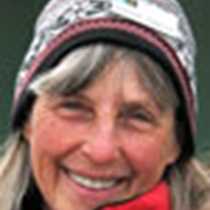Mitkof and Kupreanof Island
The dropping anchor chain clattered noisily just offshore from Ideal Cove, our morning destination on Mitkof Island. A well-maintained trail winds back from the very muddy intertidal area into temperate rain forest, it was a good test for our rubber boots. Mosses, ferns, blueberries, and bunchberry dogwoods carpeted the forest floor in every shade of green. Hikers divided into a variety of groups and negotiated the narrow plank walkway that led inland. The trail eventually emerged into a clearing with views of a stream and a marshy lake. It was fun to get off the ship and have our first introduction to the Tongass National Forest on foot.
Shortly after leaving our anchorage, a killer whale appeared in the distance. It was a single adult male. The erect dorsal fin sliced through the calm silvery water as we watched it surface.
On the far side of Mitkof Island lies the picturesque town of Petersburg where the ship tied up at the inner harbor during lunch. This is not a stop for big cruise ships. It is a fishing town, once used by native Tlingits and settled by Norwegian immigrants in the late 19th century. The Scandinavian influence is still present today.
People scattered in all directions for the afternoon. At the top of the dock, a fleet of bicycles awaited those who chose to see the area by road. Some wandered the streets and visited the shops. Although much of the fishing fleet was away at work, it was fun to look at the boats, crab pots, floats and other fishing gear.
Naturalist-guided options included a dock walk to investigate the colorful marine invertebrates that clung to the floating dock. Delicate anemones (see photo), orange sea cucumbers, and feather-duster worms thrive here in the nutrient-rich sea. Schools of shiny herring dashed about, foraging for tiny food items not far beneath the surface.
Another possibility for the afternoon was to take a quick Zodiac ride to Kupreanof Island and then hike to a muskeg, or peat bog. The trail reaches a fascinating landscape of soggy peat moss and dwarfed trees. Poor drainage and cool temperatures provide conditions for this plant community to thrive in more than 10% of Southeast Alaska. We studied carnivorous sundews and many species in the heath, or rhododendron family that survive well in this acidic habitat. One of the residents was a blue dragonfly known as a Zigzag Darner.
As evening settled in, we left Petersburg behind and motored north. During dinner we ate our fill of local Dungeness crab and tasty ribs, a satisfying end to a busy and adventurous day.




